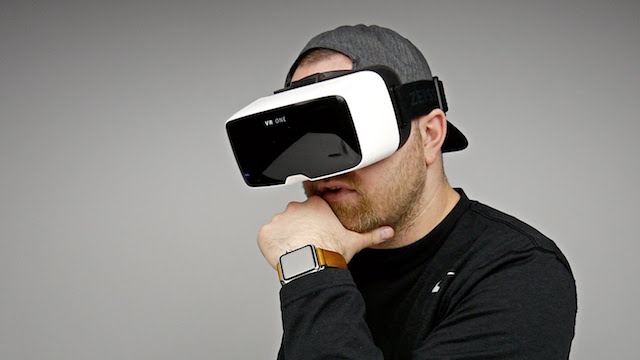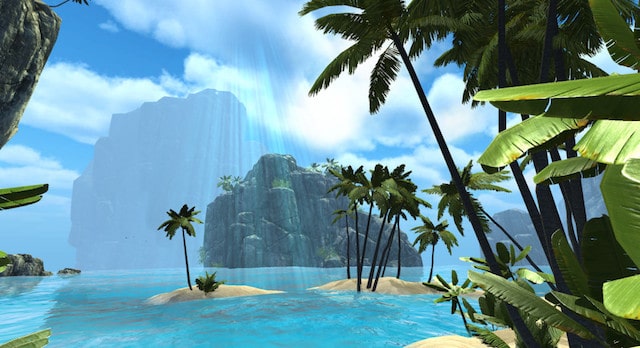
Immersive Single Tasking
A few weeks ago, I wrote about an intriguing application of virtual reality: helping knowledge workers achieve hyper productive states.
To be clear, when I say “productive,” I’m not referring to the efficient processing of the types of shallow tasks that computers will one day soon automate (think: emails and administrative drudgery).
I’m instead talking about wringing the most possible value out of your brain as you work deeply on important objectives. In other words, the type of effort that’s becoming increasingly valuable in our 21st century economy.
I called this application of virtual reality immersive single tasking. In this post, I want to provide some more details about the key principles that I think will allow virtual reality to unlock this vision of hyper productivity.
Principle #1: Disruption of Distraction Patterns.
As psychology professor Art Markman recently wrote in Inc., our brains are “time prediction machines.” They build patterns around how often we should check email and social media when in the context of our office and then automatically follow those patterns.
If your mind has learned to check email every 20 minutes when at your desk, Markman explained, then every 20 minutes it will automatically interrupt your current train of thought and redirect your attention to your lurking inbox.
Here’s Markman:
“As a result [of this effect], deciding you want to pay attention to other work for longer stretches of time requires more than just making a resolution to be more diligent about reading for longer periods of time or engaging more sustained effort to work on a key report. You have to disrupt the timing the brain has learned.”
Immersive single tasking offers a powerful tool to create this disruption. If you use virtual reality to bring yourself to an environment used only for deep work, your brain is not given the opportunity to ingrain new distraction patterns in this setting.
Artists, of course, have leveraged this effect for centuries by retreating to remote locations for creative work (c.f., here and here), but most knowledge workers cannot escape to a rustic cabin every time they need to think deeply.
Principle #2: Leveraging Visual Cognition.
One of the best known scenes from Steven Spielberg’s Minority Report is Tom Cruise using an augmented reality system to rapidly manipulate floating virtual images and videos with his hands. As Kevin Kelly reveals in his insightful new book The Inevitable, this scene was not pure fantasy. Spielberg assembled a team of scientists and futurists to help him understand what types of tools to expect in the future.
Virtual reality (and its close twins augmented and mixed reality) has brought us to this future. It will unlock many such forms of interactive visual cognition in which you can embody the concepts relevant to your deep work in informative visual objects.
When I recently demoed Tilt Brush on an HTC Vive, for example, I was struck by how useful such visualizations might be to my work in distributed algorithm theory. I imagined, for example, what it would be like if I could examine in three dimensions the behavior of a symmetry breaking strategy on a relevant set of graphs floating around me.
Similarly, imagine the metrics relevant to your business’s performance arranged around you into a literal data landscape, where interesting trends stand out as visually arresting features.
Principle #3: Enhancing Creativity with Awe.
The sense of awe generated by encountering a sublime scene can lead to a state of expansive thinking well-suited to creative insight. (It also makes people happier and less stressed, among other benefits.)
Virtual reality, of course, is heralded as a source of digital awe, and is therefore well-suited to boost creativity.
This effect is perhaps best captured in images. Imagine, for example, that you’re trying to craft a compelling chapter to open your new novel. While you grapple for inspiration, would you rather be looking at this:

Or this (a screenshot taken from an Oculus Rift demo):

Bottom Line
The concept of immersive single tasking is still new and my thoughts at this point are still preliminary. Accordingly, the above list of principles might change if this idea ever actually evolves.
But the underlying notion is one I continue to think is worth investigation. Technology is not always the foe of the type of important, impactful, meaningful, deep work I so often laud. If applied right, it can make such efforts far more common and effective.
At the same time, I should also note that I’m realistic enough to realize that immersive single tasking is probably not currently at the top of the list of VR priorities. But one can hope.
(Desk image by Jonathan Koren)

Well, before VR gets into the deep work business, I suppose one can look into adjusting the physical space around him to improve his chances at meaning full work. E.g. no clutter, no distraction opportunities (devices or otherwise). Which probably means I need to clear out my desk a bit 🙂
I’m interested that you stress that these are strategies for deep work, rather that shallow work. Having read ‘Deep Work’, I’ve found that the strategies you suggest help me get through my ‘drudgery’, allowing more time for deep work – and, perhaps more importantly, leaving me with more energy for that deep work.
The deep work must be more entrancing and rewarding than the virtual reality, or it’s likely we’ll choose to spend time in the virtual reality rather than doing the deep work. Discipline also becomes a critical factor, as it should.
Hi Cal,
I’ve been a huge fan of your blogs and zen study strategies for a long time now. Recently bought your red book and looking forward to use it for my studies as an incoming college freshmen!
Now, I know this is irrelevant to your blog post above, but I couldn’t find a better place to ask where I could grab your attention. Pls excuse me…
My question is regards to reading the textbook and studying for biology/chemistry courses. I’ve read your blog post on taking notes during non-technical science courses (focused question clusters), but how do I most efficiently and effectively utilize my textbook? Must I read everything and study the whole thing again after a lecture? Or should I use it to simply clarify foggy concepts from lectures. Just wondering how the “straight-A” students used it. Did they read before lectures….or
If you could refer me to a blog post about this I failed to notice then that would be good, too. I’d appreciate some advice! Thank you!
I would suggest you read “How to become a Straight A Student” by Cal, where he explains many strategies concerning college students.
In the end, you need to experiment whatever works best for you.
Harrison – Google.
The last two days, I joined a company cycling tour through the beautiful landscape in the Eifel, Germany.
Before the first leg, my boss gave me a problem to think about. So I did, then we went cycling, I was admiring the landscape, and during the first break, over glass of coke, I gave him the correct solution.
Maybe I’m an old-fashioned, analog kind of person, but I believe that actual physical activity in actual landscapes work best for that passive mode of thinking, which delivers you the solution as a subprocess of the brain.
I think it’s not just the visual stimuli of a landscape, but the altered biochemistry of the body during exercise, even if it’s as light as hiking.
When I do sports, I think about nothing, except about the sports. I think that’s exactly the point, getting the conscious mind off the problem so the subprocesses can do the thinking silently.
I certainly admit that the idea of having some sort of canned refuge in the form of VR is quite intriguing, but I wonder whether the things I mentioned aren’t also contributing factors, e.g. physical activity, focusing on something else.
I like the idea of adding a favorite VR setting to my personal deep work ritual one day.
Adding virtual reality is one of my dreams. Reality excited to add this to my personal routine.
Cal, very interested in hearing your thoughts on this:
https://www.huffingtonpost.com/entry/mike-rowe-gives-grad-advice_us_57597c03e4b0e39a28acb092
I think this concept will be developed in the near future but won’t be used by mass industry for a long time. It can change work process entirely and will require a lot of organizational improvements. Of course, I am talking about mass office positions. Anyway, using virtual reality for more meaningful work is just awesome.
Thanks Cal.
I like your terms “Deep Work” and “Immersive Single Tasking”. Deep Work is simple, but could be less assessable to those not familiar with your work. Immersive Single Tasking in a “single” phrase creates an alternative to the supposed virtue and myth of multi-tasking.
Good one
I love the term “immersive single tasking.” I can easily see this being applied pretty intensely in a number of business settings to help employees avoid the distractions so common to desk work. I’ll be interested to see if/how businesses begin to integrate this technology in the coming years.
Discipline also becomes a critical factor, as it should.
Adding virtual reality in our personal life can help to be success furthermore …
I understand the power of virtual reality to help with Immersive Single Tasking, but I’m not sure if this effect will last for future generations. Sure, a person can be in awe when using this tool. However, what will happen with the kids who will have grown up used to this technology? Will they still be in awe with VR? Or will they take it for granted and think of it as something that has always been around?